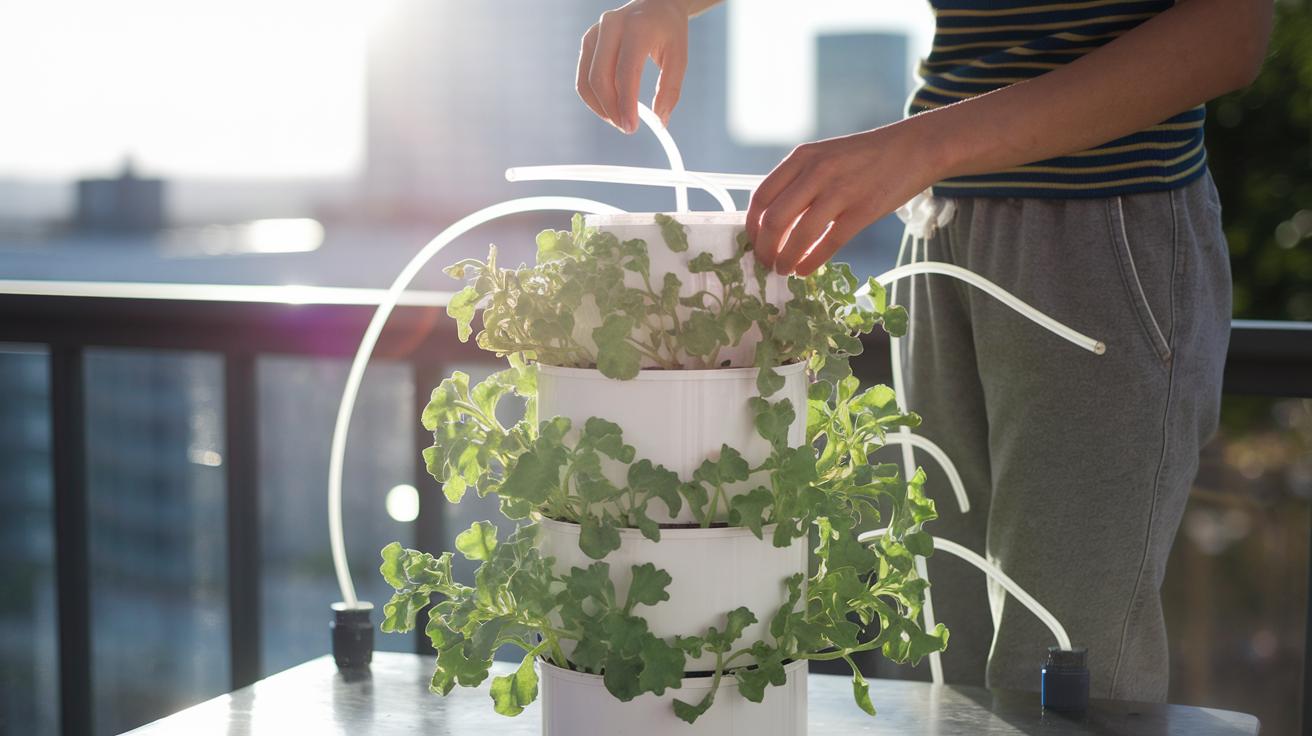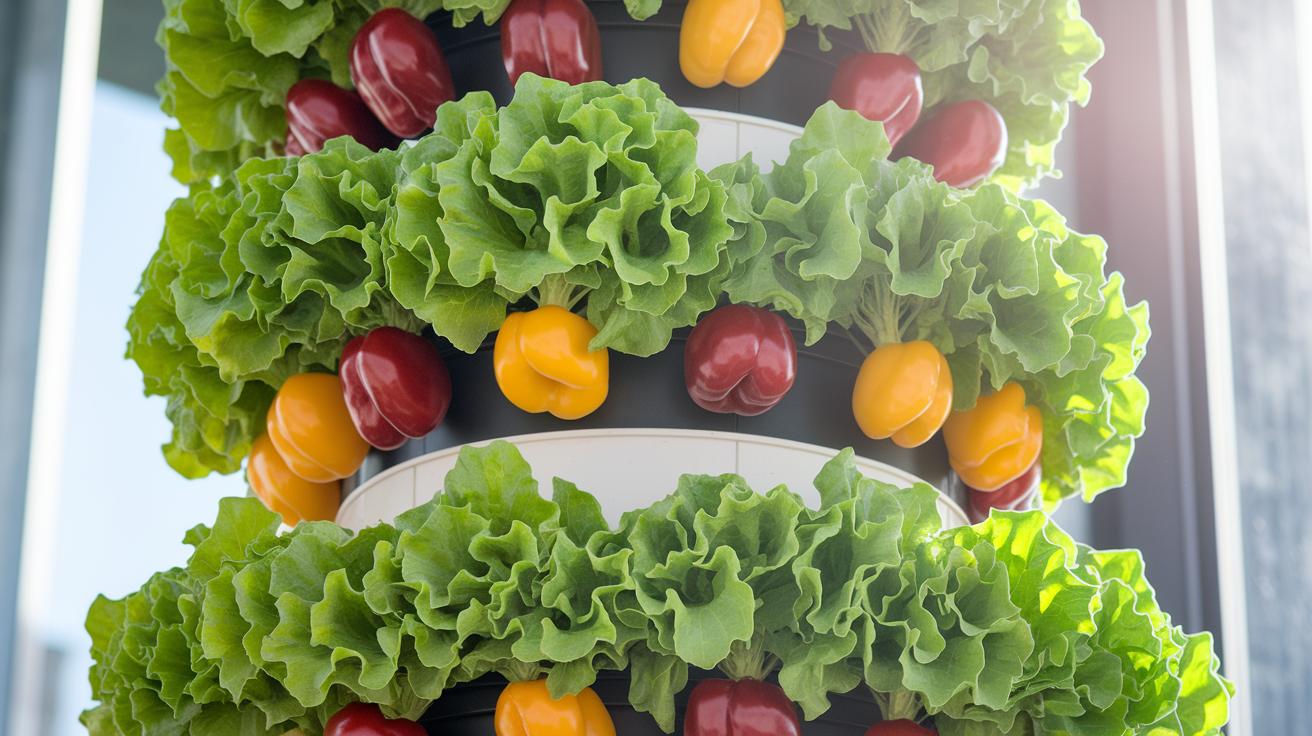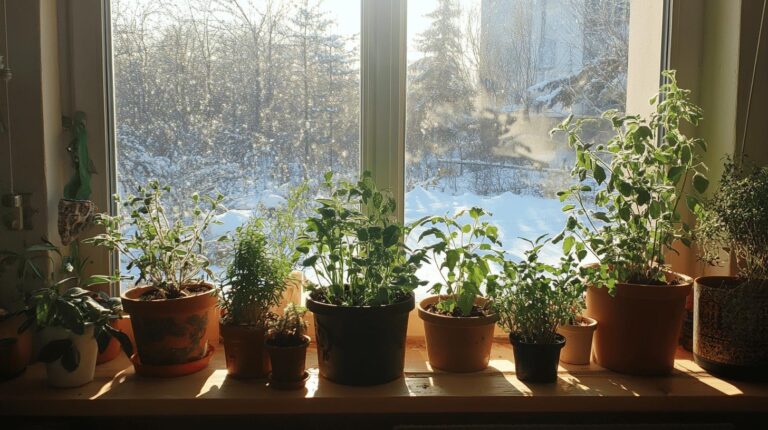Tower Garden Delivers Fresh Harvests, Buying Options
Have you ever dreamed of plucking crisp lettuce from a sunny corner of your home? I sure have. The Tower Garden (a vertical aeroponic system that grows plants in air by misting their roots) lets you do just that in as little as three square feet. It’s like a mini jungle that fits by your window, and it’s ready to feed you fresh greens all year.
The secret is a small pump and timer. Every few minutes, they send a gentle mist of nutrient-rich water to each root. You’ll hear the soft hum of the pump and see droplets glisten on the tangle of roots. Think of it as a spa day for your plants.
But here’s the real magic: you save about 90 percent of water compared to soil planting (water-saving method that uses mist instead of pouring). No heavy shovels. No muddy shoes. And because the roots float in air, pests have a harder time crashing the party.
By the end of this post, you’ll know why Tower Garden outshines traditional beds and how to pick the setup that’s right for your budget and space. Ready to turn your balcony or kitchen nook into a salad bar? Let’s dig in.
Vertical Aeroponic Garden Overview: How It Works and Core Benefits
Have you ever wanted to grow crisp lettuce and sweet herbs without a big backyard? A vertical aeroponic garden can make that dream real. Aeroponic means roots float in air and get sprayed with water and plant food.
Here’s how it works! A small pump sends nutrient-rich water up through the tower. Then a timer triggers a fine mist every few minutes so your roots soak up moisture and minerals right where they hang.
No soil needed (soil is ground-up earth that holds nutrients). Instead, your roots hang free in an open chamber where they can breathe.
And because the roots never sit in water, disease risk and overwatering problems drop. Plus, in open air they gulp oxygen while sipping mist – that means faster growth and bigger yields.
Core benefits include:
- Small footprint: fits on a balcony, patio or sunny corner.
- Year-round harvest: mist cycles and optional grow lights keep crops thriving through winter.
- Low upkeep: automatic pump and timer mean no hand-watering or weeding.
- Water wise: recycles its nutrient solution and uses up to 90% less water than soil gardens.
- Continuous picks: snip mature leaves or fruit without disturbing other plants.
With just three square feet, you can grow basil, kale, lettuce or even cherry tomatoes right at home.
By the way, my cat loves curling up next to mine. But back to you – imagine fresh basil on your counter in weeks, not months.
Tower Garden Components: Kit Parts and Function
When you open your tower garden kit you’ll see a stack of planter columns that snap together like building blocks. These modules hold your plants up high so you can grow a lot in a small space. There’s also a water pump, timer, and instructions to set up your aeroponic system (spraying roots with nutrient-rich mist) fast. No dirt needed.
The pump pushes nutrient solution through tubes to mist your plants’ roots. The timer takes care of the mist cycles so you get steady growth without guessing when to water. Easy, right?
You start seeds in rockwool cubes (soft fibers that hold water) or Rapid Rooter plugs (natural fiber seed starters). Then drop each plug into a net pot (a small plastic pot with holes) and pop it into the column. By the way, my cat once knocked over a plug thinking it was a toy, oops, back to gardening.
You can add LED grow lights for extra sunshine or slide on tomato cages (plant supports) when your vines get heavy. These extras snap on just as easily as the columns.
Net pots keep your seedlings steady while the mist keeps their roots happy.
| Component | Function |
|---|---|
| Water pump | Circulates nutrient solution to mist roots |
| Timer | Programs mist cycles for consistent delivery |
| Rockwool cubes/ Rapid Rooter plugs | Seed-starting media that holds moisture |
| Tower columns (planter modules) | Support plant sites and spread mist |
| Optional add-ons | LED grow lights and plant supports (e.g., tomato cages) |
And that’s it. Your tower garden is ready to sprout!
Step-by-Step Tower Garden Setup and Installation

Hey neighbor, ready to bring your Tower Garden to life? Let’s walk through the basics so you can enjoy fresh greens in no time.
Quick-Start Checklist
- Snap the base tray (your water storage) and the columns (plant towers) together. Use the torque-lock tool and listen for a click.
- Pour in water and nutrients (liquid plant food) up to the fill line in the reservoir (water storage). It’s about 3 gallons of cool, fresh water.
- Turn on the pump for a 1-minute mist cycle. It wakes up the system and gives your roots a gentle spray.
- Set the timer for a 15-second mist every 30 minutes. This keeps roots moist like morning dew.
- Move your tower into six-plus hours of sun, ideally on a south-facing patio or balcony. Those warm rays help plants stretch.
- Clip on grow lights (plant lamps) if you’re indoors or in low light. They’ll keep herbs and greens bright and happy.
- Press seed plugs (starter cubes) into net pots (small baskets with holes). Drop each net pot into its column slot. And breathe. You’ve set the stage for sprouting.
By the way, I once forgot to prime the pump and ended up with dry roots. Oops. Back to your garden magic: for all the nitty-gritty, grab our full setup guide PDF.
Best Crops and Planting Techniques for Tower Garden
Lettuces are a quick win and feel fresh between your fingers. I love planting green oak and butterhead in my tower and picking sweet little leaves at about 30 days. Loose leaf to romaine all work, so pick your favorite. Have you ever smelled a crisp lettuce leaf right out of the garden?
Spinach in peatmoss (decayed organic matter that makes soil-like beds) plugs also grows fast. I start seeds in Rapid Rooter (a compact starter plug) and watch soft spinach leaves pop up in under 40 days. It’s like a mini green wave.
Tomatoes bring joy and color. I tucked three cherry tomato seedlings into my tower and ended up with sweet bite-sized fruits in ten weeks. A small clip-on fan gave blooms a gentle breeze, helping them pollinate. The taste of sun-warmed cherry tomatoes? Pure bliss.
Bell peppers loved the steady water flow. I pulled about 20 crunchy peppers per cycle, enough for stuffed pepper night. Oops, I almost forgot to mention that the skins stay thin and sweet, not tough. They really shine in a tower.
Herbs need sunshine and a cozy spot. Oregano, thyme, sage, and mint sprouted like crazy from Rapid Rooter plugs. By the way, if you want a DIY hydroponic herb garden, check out the guide here. Those plugs beat rockwool for fewer mold issues and easier handling.
Microgreens make a tasty snack fast, you know. I sow mustard and radish seeds close together in the top tower level. Try harvesting in just two weeks and you’ll be adding spicy greens to everything. Bok choy, collards, even chamomile flowers surprised me under the tower light.
Planting timeline tips are handy. I keep it simple:
| Crop | Plants per Pot | Harvest Time |
|---|---|---|
| Lettuce & microgreens | 1–2 seeds | 30–40 days |
| Herbs & greens | 1 seedling | 6–8 weeks |
| Tomatoes & peppers | 1 seedling | 10–12 weeks |
Mixing crops by maturity keeps fresh greens coming all season. Start new seeds as you harvest older crops so there’s always something ready to pick. Planting now sets you up for a non-stop harvest party.
Tower Garden Maintenance and Troubleshooting Tips
-
pH control (measure of acidity or alkalinity): Every week, dip a pH tester into your nutrient water and aim for a cozy 5.5 to 6.2. This sweet spot helps roots slurp up nutrients. If the numbers wander, add pH-up (liquid that raises pH) or pH-down (liquid that lowers pH) drop by drop until it settles.
-
Water quality and nutrient swaps: Before you top off, test your water hardness (mineral content) or electrical conductivity (EC, how many minerals are dissolved). Some gardeners swap in Dyna-Gro Grow (a popular plant food) instead of Tower Garden nutrients with no fuss. Just follow the package directions.
-
Monthly cleaning and flushing: Once a month, drain your reservoir and refill it with clear water. Then give the tubes, fittings, and pump inlet a gentle scrub with a soft brush (I use a little toothbrush). This knocks off mineral buildup and keeps everything flowing smoothly.
-
Algae prevention: Algae loves sunlight, so cover your reservoir with a lid or tuck a towel around it to block light. When you spot slimy green patches, scrub them gently with a soft brush and rinse before you add fresh solution.
-
Pest deterrence: Point a small fan at your tower for a light breeze that dries leaves and wards off mold. It also helps shake loose pollen so blossoms can set fruit. If aphids or red mites show up, skip harsh sprays and invite ladybugs (natural pest eaters) to your garden party instead.
Yield, Sustainability, and Cost Efficiency of Tower Garden

Tower Garden brings big harvests to a small spot. Think of it like a mini farm you can tuck on your patio. It sips water, not gulps it. And you’ll watch your grocery bills shrink over time.
- You’ll spend about $500 to $1,200 on a Tower Garden kit (vertical hydroponic growing tower).
- You can save roughly $60 to $100 each month on fresh produce.
- Most gardeners break even in about 9 to 12 months of steady harvests.
| Expense | Annual Cost |
|---|---|
| Store-bought produce | $1,200 |
| Homegrown with Tower Garden | $400* |
| Net savings | $800 |
Ever wonder how far your lettuce travels? Growing at home cuts about 2,500 miles of food trips each year. You’ll also keep nearly 75 pounds of plastic packaging out of the trash. And you slash roughly 200 pounds of CO2 emissions annually.
Choosing and Comparing Tower Garden Kits and Models
Have you ever seen a garden that grows up instead of out? The official tower garden kit comes in two sizes, you pick either 20 plant sites or 28. You can snap on grow lights (they mimic sunshine) or slide in tomato cages to support heavy vines. And each Juice Plus Tower Garden includes simple online tutorials plus a supplier directory so you know exactly where to grab extra parts or ask for help.
If you’re watching your wallet, DIY hydroponics might be your jam. You’ll buy a small pump (it moves water around), a timer, net pots (little cups that hold the roots), and tubing. Then you mix and match based on your space. I once set one up in my kitchen window, felt like a mini science fair, but way more fun.
Modular vertical planters are perfect for balconies, patios, or even a sunny corner indoors. You stack as many columns as you need and add more over time. Schools and community gardens love this idea too, one small home tower can turn into a whole row of teaching gardens or local produce stations.
So, how do you decide? If you want something ready to roll with support at every step, go for the branded kit. But if you love customizing and saving a few bucks, dive into the DIY options. Don’t forget to peek at community forums or that supplier list, those tips can be gold when you’re sourcing parts.
Final Words
In the action, we reviewed how mist-based roots grow fresh greens all year and got to know pump, timer, and planter parts.
Then we guided you through stacking columns, setting the timer, and choosing the perfect spot indoors or outside for sunlight.
We shared top crops to try, pH check tips, easy fixes, and water savings stats that show your return.
Every step makes yard care simpler, family time richer, and homegrown meals tastier.
Get started with your own tower garden and enjoy fresh produce at home.
FAQ
What is a Tower Garden?
The Tower Garden is a vertical aeroponic (nutrient-rich mist) system, like the Juice Plus Tower Garden, for growing herbs, greens, and veggies year-round indoors or outdoors without soil or weeding.
How does an aeroponic Tower Garden work?
The aeroponic Tower Garden cycles nutrient-rich mist to roots suspended in stackable columns, letting plants soak up water and nutrients without soil, so you enjoy faster growth and lower maintenance.
What plants can and can’t you grow in a Tower Garden?
A Tower Garden excels with leafy greens like lettuce, herbs, microgreens, tomatoes and peppers, but large root crops such as carrots, potatoes or grains aren’t suited to its aeroponic columns.
How can I purchase or build my own Tower Garden?
You can buy official Tower Garden kits from Juice Plus or authorized dealers, or create a DIY tower by sourcing stackable planters, a submersible pump, timer and net pots from garden centers or online.
What are the Tower Garden HOME and FLEX models?
The HOME model features about 20 planting sites in a freestanding design, and FLEX offers a compact, wall-mountable setup with roughly 12 sites—both plug-and-play with optional grow lights.
Why is Tower Garden so expensive?
Tower Garden’s higher cost reflects its durable, UV-resistant tower, self-watering pump system, optional LED grow lights, and step-by-step support resources that deliver reliable, year-round vegetable and herb harvests.
How much do Tower Garden kits and farms cost?
Tower Garden home kits start around $300-$400, and commercial tower farm installations can range from $5,000 to $20,000 depending on system size, optional lighting upgrades and installation support.







